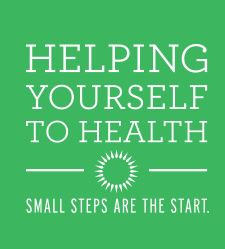11 Smart Ways to Boost Workout Intensity
Longing for the good old days when every workout felt fresh, challenging, and left a welcomed soreness for the next few days? It’s easy to get stuck in a exercise routine and while going through the motions of a “ho hum” workout may be better than no workout at all, this uninspired approach won’t likely lead to significant improvements. Exercise programs need to be modified regularly in order to see and feel continual results, but it can be difficult to adopt and stick with a new exercise routine.
The solution: A proactive plan of action that injects new life into a boring workout routine and provides motivation to do more than simply “get to the gym.” Here are a few techniques that can help anyone break through a fitness plateau and find satisfaction in a challenging new exercise regimen.
- Watch the clock: Workouts often suffer from too much time spent chatting and too many trips to the water fountain. Research shows short, intense workouts offer the best results, so grab a stopwatch and use it to tell you when it’s time to work and time to rest. Remember to pack your water bottle so that you can stay hydrated with zero travel time. For a killer workout pace, try allowing just 60 seconds of rest between each set to add a cardiovascular element to the workout. This increases fat burning while packing on lean muscle.

- Superset strength and cardio: People often think of strength training and cardiovascular exercise as two separate beasts, but this doesn’t have to be the case. Adding a cardio interval such as jumping rope or 20-second sprints will rev the metabolism while still allowing for added strength.
- Skip the machines: While exercise machines do make resistance training user-friendly, lifting with free weights will incorporate more stabilizing muscles and therefore burn more calories than their weight machine counterparts. The same can be said for body weight exercises, which can be more effective for core strengthening and calorie-burning than workouts done on machines.
- Add instability: Exercises that require balance stimulate more muscle recruitment, specifically core muscles, than the same exercise done in a stable position. The good news is most stable exercises can easily be changed up by adding a BOSU or stability ball (just be sure proper form is never compromised).

- Train one side at a time. Can’t help but favor your dominant side? Using exercises that force each arm or leg to work independently will help balance muscular development and equalize strength. A one-legged squat or single-arm push-up are great examples that also strengthen the core.
- Add resistance. Get ready for some pretty heavy stuff: A recent study showed that exercisers who lifted a heavy weight for just 8 reps burned double the calories of those lifting lighter weights for 15 reps. Try implementing this rule of thumb: Keep adding weight (in small 2-5 lb increments) to an exercise until achieving 3 sets of 10 reps becomes very challenging (as in almost impossible to squeeze out the final rep!). Practice with that weight until 10 reps becomes too doable and then add a few more pounds of resistance.
- Complete the circuit. Quickly moving from one exercise right into the next is a great way to create a time-efficient, cardio-focused workout. When setting up a circuit, just be sure to order exercises that target different muscle groups back-to-back to avoid burnout. This gives each muscle group enough time to recover while the next body part is targeted.
- Aim for failure. Failure occurs when a muscle is so spent it can’t complete one more repetition of an exercise (while maintaining proper form). Research suggests training to failure can increase strength and improve the body’s ability to build lean muscle.
- Write it down. Remembering every exercise performed, every repetition accomplished, and every weight selected during a previous workout is nearly impossible. Without a record of past workouts it’s also difficult to see measureable progress. Using a workout journal or fitness app provides motivation to rock every workout.
- Find a partner. People who have an exercise partner are more likely to get active and stay active than those doing it on their own. Finding a workout buddy instantly increases the accountability factor and provides increased motivation to work harder during an exercise session. Plus, exercising with others is a lot more fun!
 Make it social. Not sure the world really needs to hear the details of your exercise goals or weight-loss targets? Research shows that social support gained through vocalizing health and fitness goals increases the likelihood of those goals being achieved. So make a few goals public with friends, family, or anyone else who will listen, and then get it done! Posting specific goals on social media outlets enlists hundreds, if not thousands, of instant accountability partners. Try slacking in a workout when the “Twittersphere” is waiting to hear the results!
Make it social. Not sure the world really needs to hear the details of your exercise goals or weight-loss targets? Research shows that social support gained through vocalizing health and fitness goals increases the likelihood of those goals being achieved. So make a few goals public with friends, family, or anyone else who will listen, and then get it done! Posting specific goals on social media outlets enlists hundreds, if not thousands, of instant accountability partners. Try slacking in a workout when the “Twittersphere” is waiting to hear the results!
Ready to ramp things up? Just remember not all techniques will work overnight, and some might be more effective than others depending on a variety of personal factors. Keep an open mind, listen to your body, and don’t forget to eat right and get adequate rest.




.jpg)




Comments
Post a Comment